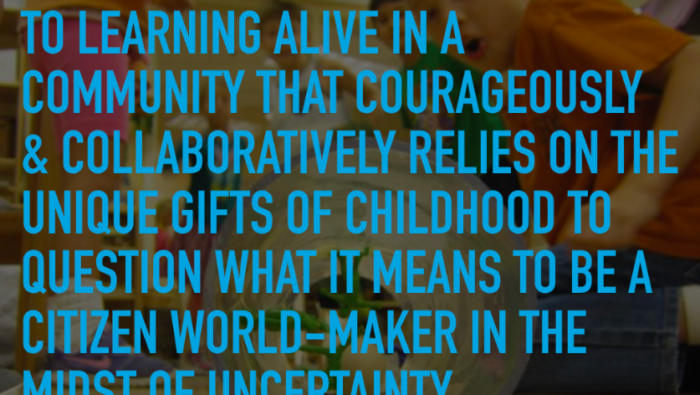
FROM THE OPAL ARCHIVE: 02/2017 – Written by Matt Karlsen, Director of Opal School’s Center for Learning
To learn more or connect with Matt directly, check out the important work he’s currently doing at centerforplayfulinquiry.com
“Playful Inquiry is an approach to learning alive in a community that courageously and collaboratively relies on the unique gifts of childhood to question what it means to be a citizen world-maker in the midst of uncertainty.”
At Visitation Days, we explored this definition of Playful Inquiry with educators from across the United States and Canada – and we’ve been chewing on it here ever since. There is so much to unpack, as every clause crawls with meaning, opening the door to vital (and complicated) questions:
Who is this community?
How is it courageous and collaborative?
What are the unique gifts of childhood?
What does “citizen world-maker” mean?
What kinds of uncertainty?
Behind each of those questions lie dozens more.

One group of participants, who joined us from an early childhood center in Southern California, posted the definition on Facebook to see what their parent community might make of this idea. A dad commented,
To me, this is like dancing at a party. People are more apt to dance when you dim the lights a little lower, play the right music, others are dancing too, and the individual can just be in the moment and in their own body without any fear of what they look like. On the contrary, if your party has bright lights, bad music, no one is dancing, and the host instructs everyone to, “get on the floor and dance” and those that get on the floor are great dancers, the rest of the party will not want to join in the fun, no matter how badly they may want to dance.
Today, I head to New Mexico for conversations with representatives from Ashoka Changemaker Schools. Schools in this network are dedicated to supporting the capacity of young people for empathy, collaboration, leadership, and creative problem-solving. As I listen to their stories, I’ll be curious to hear about their dance floors. How are they conceptualizing the purpose of schools? What image of children are they operating from? How are they exploring intersections of empathy and agency? How are children in their schools experiencing beauty and democracy?
We all need to approach questions of education reform with the same “culture-maker/word-breaker” energy Tara shows us is alive in the Cedar classroom.
In New Mexico, I hope to hear stories that point to new possibilities for ways to live together. Here’s hoping.